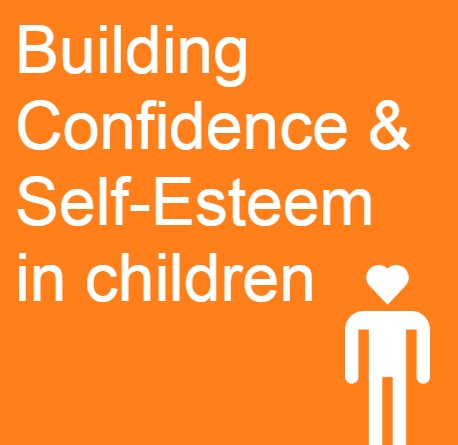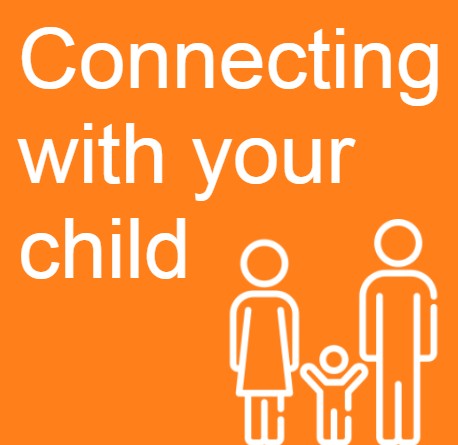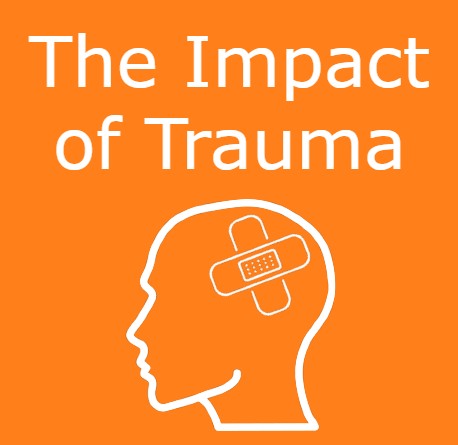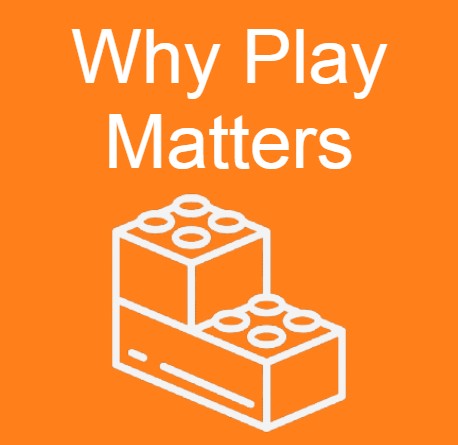Therapeutic Parenting
Online Gaming
 Online gaming is becoming a large issue in young peoples lives. Not only do many online games contain violence and inappropriate sexual content, they can expose your child to online predators and cyberbullies.
Online gaming is becoming a large issue in young peoples lives. Not only do many online games contain violence and inappropriate sexual content, they can expose your child to online predators and cyberbullies.
Additional concerns lie around privacy issues, exposing your personal data online and, in some cases, allowing access to your computer and webcam.
Additionally, online gaming can affect your child's wellbeing, emotional state and even their mental health. Games such as Fortnite has been designed to be addictive due to the immersive nature and constant weekly updates.
When online gaming becomes excessive.
Check for the following signs, does your child.
- Play every day?
- Play longer than three to six hours each day?
- Lose interest in other hobbies they previously had?
- Show a low mood or negative behaviour if they cant play?
- Fail to go out or undertake physical activities?
- Neglect their tasks or jobs in the house due to playing the game?
- Show an inability to stop playing when asked?
Tips to protect your child from online gaming:
- Don’t use your personal details. Many online games need an account. Check your child is not using their personal details by using random usernames. Check to see if the game is age-restricted, this may be an indicator of the games content.
- Check your child's settings: Make sure your child's account is set to private. This allows your child to invite people to play who they know and stops anyone unknown entering the game.
- Check the options for chat: Many games allow people to talk with each other throughout the game. Some games allow voice masking which allows comment's to be made without accountability. Check your child's game setting to check whether these settings are suitable.
- Check your child's understanding of what is acceptable: Create opportunities for your child to come to you if they have experienced anything inappropriate online. Talk to them about what is acceptable and ensure they are open to talking to you about these issues.
- Don’t give access to card details: Many games involve buying new upgrades and levels. This is in place to help to advance the progress your child makes in a game. Be sure that your child has no access to any card or bank details. With the card details inputted, this can be as easy as pressing a button and can lead to a large amount of debt.
- Be aware of trends. In some games, added trends may put your child at risk. For example, In Fortnite, a new trend called 'Strip Fortnite' which involves removing clothes for every kill a player gets. Check your child's understanding of these, ensuring they don’t put themselves at risk.
- Look out for signs of addiction: Be sure you are monitoring the child whilst they are playing the game. Try to give them time limits for playing, a set time at night to stop and remove devices from the bedroom which they may use to play the game outside of the set time. Once this routine is established, it will give understanding to both child and parent/carer of what is expected.
Report any concerns to the game, using the Main menu. Be sure to remember the time, date and the username of the person involved.
Make a report to CEOP, Child Exploitation and Online Protection Command, through their online safety centre.
Building Confidence and Self-Esteem in children
 Having confidence in your abilities and good self-esteem has shown to have a huge effect on a child's outcomes in later life.
Having confidence in your abilities and good self-esteem has shown to have a huge effect on a child's outcomes in later life.
Not only does it allow the child to try new things and develop new skills, it also allows the child to enjoy their successes and feel valued in life.
Furthermore, this allows the child to build resilience when faced with failure and loss, assisting them in learning from their mistakes and seeing negative experiences as a chance to improve.
Building self-esteem can help with your child's motivation.
Don’ts:
- Don’t talk negatively about your child to others in front of them. This will damage their self-esteem and damage your relationship with them.
- Don’t mock or laugh if your child makes a mistake or fails at something. This will make them more reluctant to try again.
- Don’t overpraise. Children know when you're being insincere. Also, overpraising will lead to the impact of the message becoming lessened and in some case hurt the child's confidence.
- Don’t uncaringly criticise your child. Children will take on comments which are said about them personally, resulting in damage to their self-esteem. Alternatively, focus on what they are good at.
Top tips to help your child with Confidence and Self-esteem
- Reward effort, not only success. Recognise that your child's greatest success is taking part. If a child is only rewarded when they achieve, they may link love and caring feelings from a parent/ carer with success.
- Be sure to show unconditional love, accepting that your child may make mistakes or mess up. These must be addressed but not lingered on. This may cause the child to feel they are not capable of change.
- When setting tasks for your child, make sure they are achievable. This will allow your child to experience success and build confidence that they can achieve. For example, putting toys away or doing the dishes.
- Help your child to learn by demonstrating the correct method. This will not only help build your relationship, it will give your child a chance to learn and achieve.
- Encourage them to keep going. Reward persistence in your child at every occasion. This is suggested to link positive feeling to challenge, enabling the child to feel they are not to blame for struggling and overcome challenge.
- Use choices for children to help build self-esteem. When you give your child choices they feel they have some element of control in their life.
- Lead by example. Take good care of yourself both physically and mentally. Children learn from everything you say and do. Use this effect to build their self-esteem.
Connecting with your child
 Having a positive relationship with your child is clearly important. Being able to connect with your child is an effective way of building a bond with your child and understanding how they feel in their life.
Having a positive relationship with your child is clearly important. Being able to connect with your child is an effective way of building a bond with your child and understanding how they feel in their life.
Top tips to help you connect with your child.
- Have a conversation: Simply talking to your child about their day or what they have been doing will show interest in their life. Make sure the conversation is balanced, actively listen to what they have to say and remember as much as you can If you have difficulties in doing this check out the advice on active listening.
- Take an interest in their interests: Try and take part in an activity which interests your child. This could be as easy as playing on a video console with them but it will give you common ground to both talk about and connect on.
- Let them join in with your interests: Why not let your children join in on your interests. This could be watching a game show together or even watching a football match.
- Remember boundaries: Doing activities together and sharing experience will help build relationships but ensure the line between parent and friend is not crossed. A child needs the parent/ carer to be there as guidance and structure. Don’t allow the lines to become blurred.
- Make one to one time. Ensure each child has one to one time. This allows the child to connect deeper, building a stronger bond due to it being all about them.
- Go technology free for one night: There are so many distractions in life. Many of these come from TV, phones, tablets, etc. turn off all this technology and play or talk with your child. For examples, use board games or go for a walk This allows all the focus to be on family time.
LGBTQ
 LGBTQ+ Inclusion Statement and Mental Health Support.
LGBTQ+ Inclusion Statement and Mental Health Support.
Promoting a safe and inclusive environment for all students within the trust is a priority for Trinity Academy. We aim to support our LGBTQ+ students with a... Approach which will involve education programmes for both staff and students, to help us all better understand the diverse needs and strengths of our LGBTQ+ students, safe spaces, access to support services and programmes within the school to support LGBTQ+ issues in our local and global communities.
Mental Health Issues for Young People
Growing up is difficult for all young people, dealing with puberty, peer pressure, and being in the age of social media. However, mental health issues for young people who are LGBTQ+ can be more prevalent than for their heterosexual peers. These can include; depression, anxiety, identity issues, gender dysphoria, self-harm, feelings of isolation, and substance misuse. Evidence suggests that the reasons for this are a range of factors such as bullying, discrimination, isolation and homophobia. (LGBTQ Foundation, 2015).
LGBTQ+ young people are also more likely to engage in risk-seeking behaviours such as self-harm, suicidal thoughts and are at a higher risk of exploitation.
Signs to Look for in Your LGBTQ+ Teen to Show They May be Experiencing Poor Mental Health:
- Sudden changes in your child’s personality, such as withdrawing from friends and social activities they have enjoyed in the past.
- Sudden decline in grades or unexplained school absences.
- Unexplained or sudden weight loss. This could be related to body or gender issues.
- Signs of substance abuse (alcohol and drugs).
- Signs of self- harm, such as cutting, scratching or burn marks. (Sometimes a person will wear long sleeves and trousers during warm weather to hide the marks).
- Signs of bullying, both physically and emotionally (bruises, cuts, fear, avoidance).They may also be avoiding social media or become obsessed with checking it.
- Aggressively rejecting typical gender norms that they have previously adhered to. If your child is struggling with identity issues, they may be hyper-sensitive to being misgendered.
- Headaches and stomach-aches. These are common symptoms related to stress.
Ways to Help
Some young people are afraid that telling their parents that they are gay, lesbian, transgender, bisexual or queer, will result in rejection from their family, friends and even jeopardise their position within the family home. The best way to help your LGBTQ+ child is to talk to them. Fostering a safe environment within which they can express themselves about their sexuality or gender identity will help your teen to better communicate their needs.
- You can encourage your child to be open and honest about their feelings with you. If they find this difficult, there may be a family member or family friend whom they feel more comfortable talking to about their LGBTQ+ related problems.
- There are local LGBTQ services within the North-East who specialise in these issues who can help your child, you as parents and may be able to direct you to appropriate counsellors or other professionals if need be.
www.lgbtfed.com/about-us - general information
www.akt.org.uk – housing for young LGBTQ+ youths
https://www.streetwisenorth.org.uk/ - general information and sexual health advice.
- Be sure to record all incidents of bullying, keep a diary of your child’s marks and of who was present. Report all incidents of social media bullying to the website or app team.
- Encourage your child to look into local support and youth groups for LGBTQ+ youth. Being part of a community who relates to your issues is a good way to rebuild your mental health.
- Keep involved with your child’s school, find out what they are doing to ensure your child is safe and included in all learning and social activities.
- If you need help to better understand your child’s LGBTQ+ status, the above websites have support for parents and allies of LGBTQ+ youth.
Impact of Trauma
 Developmental trauma is a term used to describe childhood trauma and the effects it has on the child or young person.
Developmental trauma is a term used to describe childhood trauma and the effects it has on the child or young person.
Children and young people are highly vulnerable to traumatic experiences they have fewer resources to deal with situations. When experiencing distress, young children have a stronger sense the end result may include the possibility of death, resulting in extreme reactions. This can result in high levels of stress, which, if prolonged and constant, can lead to TOXIC stress and cause the child to develop hypersensitivity to any challenging experience. As a result, these experiences may not be considered a matter of life and death for an adult, but to could be experienced as such by a young child.
These traumatic events are commonly known as adverse childhood experiences and, without support from a key adult, may result in changes to the way the brain both processes information and understands the world they live in. This, in turn, may affect their personal, emotional and social development in the following ways.
- The child or young person may have increased sensitivity to stress & threat
- The child or young person may have an ability to both understand their emotions and be unable to regulate them.
- The child or young person may have limited ability to think through and solve problems.
- The child or young person may struggle to interpret social information, reacting defensively due to increased anxiety and misunderstanding.
- The child or young person may lack the ability to empathise with others, showing little or no care for other emotions.
Overall, trauma alters brain structure, chemistry and behaviour, damaging the ability to manage normal anxiety in a healthy way. It is important to understand this when attempting to communicate and help all children and young people who have experienced trauma.
How to help someone with trauma.
- Find out as much as you can about the child or young person, including the experiences they have faced, how these affected them and how that presents in their current behaviour.
- Every interaction counts! If the child has experienced trauma, every interaction has the potential to active possible implicit memories and their feelings around attachment so ensure all interactions are positive.
- Help to rebuild the missing areas of the child or young person development, such as ways to cope with challenges, social expectation and emotional growth. This can help the child or young person understand that there are other options available to them rather than the one they have used previously to survive.
- Use repetition of these skills to strengthen the connections in their brain and build skills which they can use in the future.
- Ensure you remain regulated and take care of your own wellbeing. As every experience counts, the emotions and way you behave is very important. The child or young person will learn from the experience of others about how to deal with emotions and choices of behaviour.
- Create a therapeutic environment to help the child develop a secure base. You can do this by building a trusting relationship, ensuring you are seen as safe and predictability in your reactions and emotions by using positive language and remaining calm.
- Use safe, predictable responses to reassure the child or young people that rules and consequences are meaningful
- Have clear lines and boundaries defining appropriate behaviour, reinforcing these consistently and calmly.
- Creating a positive physical environment can help the child or young person remain calm. Have visual prompts to help strengthen positive connections.
- Show balance in every interaction. Provide warmth & nurture, allowing the child or young person to develop independence matched to their developmental age whilst ensuring there is clear structure, discipline and boundaries.
When the child or young person hits crisis, it is essential the aftercare is taken to ensure the relationship can be repaired, this is called interactive repair.
Interactive repair.
Interactive repair is the discussion that comes after the break-down in relationship. It helps to build connections between the thinking and emotional part of the brain. One way of doing this is by using the PACE model, Developed by Dan Hughes. PACE is a way of being and use 4 principles when managing behaviour. PACE stands for:
- Playful parenting, engage the child or young person in physical activity.
- Acceptance of the child’s inner world. Show an understanding and acceptance of the emotional the child is feeling. They need to feel you recognise their emotions in order to start thinking logically.
- Curiosity about the meaning behind the behaviour. Ask about what they are feeling and the reason for the behaviour.
- Empathy for their emotional state. This can help the child or young person feel more secure when inner experience is understood, accepted and empathized with.
For more information on this approach, please see:
http://www.danielhughes.org/p.a.c.e..html
For further guidance around trauma-informed care, please see:
https://www.goodtherapy.org/blog/7-ways-to-help-child-heal-from-trauma-0327185
https://www.helpguide.org/articles/ptsd-trauma/helping-children-cope-with-traumatic-stress.htm
For more information on this approach, please see:
Fussy Eaters
 How can we change their eating habits?
How can we change their eating habits?
We have all heard someone being described as a “picky eater” or a “fussy eater” but what exactly do we mean by that? At times all children 9and adults) will be fussy about what they will or won’t eat, but when do we recognise that this could be a problem?
Picky or fussy eating can best be described as covering a spectrum. At one end the range are children who will be fussy about refusing to eat certain vegetables, but generally eat a reasonable range of other foods. At the opposite end of the spectrum will be people who will “gag” at the mere sight of certain foods, so most children will be somewhere in the middle, although if you are trying to cater for a family this is no comfort!
Those children who are at the lower end of the scale will exhibit the following:
- Eats 20- 25 foods on a regular basis. Eats at least a few fruits/vegetables, carbs, and proteins.
- Can be coaxed to occasionally try new foods.
- Bribes, rewards, and punishment will often work.
- Usually will eat foods similar to their favourites. For example, will eat a variety of chicken nuggets or pizza, they will typically not reject different brands or styles.
- Sometimes eats foods different from the rest of the family.
- Will suddenly refuse food they have preferred, but will eat it again in the future.
Those children who have more severe issues will show the following traits:
- Eat less than 15 foods consistently, maybe as few as 1-3.
- May gag, shudder or vomit at the sight or taste of foods. (Just like my second son when he started eating).
- Common picky eating strategies like the “try a bite” rule and punishment often don’t help them to eat more or new foods.
- May become emotionally upset when they are encouraged to interact with non-preferred foods.
- Refuses large categories of foods (vegetables, meat, etc.)
- Might lose weight or have growth concerns.
- Seems to have a sensory issues with the food (the way it smells, looks, feels, etc.)
- May insist on foods being preferred in specific ways or will only eat a specific brand/style of food.
- Almost always eats food different than the rest of the family.
- Will suddenly refuse food they previously preferred and never eat it again.
- May only eat with distractions like a tablet, tv, or toys.
So, now we have established the severity of the issue what can we do to support children to overcome these issues?
The golden rule should be “families should enjoy mealtimes together”
- Ensure there are enough opportunities to eat – some children may not be ready to eat at recognised mealtimes.
- Eating and drinking happen at the table, including snacks
- There is enough of the food that he or she will eat to be satisfied
- There are opportunities to get used to the smell and presence of new foods
- Aim for three meals a day plus two snack times, the idea is to avoid a “grazing” type of eating pattern as children who do this never learn to recognise hunger.
- When introducing new foods allow children time to explore them without pressure to eat them, they may just be on a plate in the middle of the table
- In addition, try to introduce new versions of favourites eg if children like chicken nuggets try “baked” chicken or allow them to create their own
- Children are more likely to eat food that they have prepared themselves
- Allow children to explore foods-creating artwork using foods, for example giving them the opportunity to prepare and cut fruit/vegetables to make pictures without pressure to eat the food.
- If your children refuse to eat anything - DON’T PANIC! It would be very rare for a child to actually starve themselves, so try not to give in and replace meals with treats.
A few activities to try:
When we eat we use all our senses so here are some “games” to try to harness the senses:
Show your child three bowls of peppers (red, orange and green) and ask them which one looks the tastiest, then allow them to do a “blind” taste test, using a blindfold allow them to taste each colour.
The texture of foods can often be an issue, so this activity is designed to allow your child to explore what they mean by different textures:
Using a blindfold get your child to taste the following foods, and they must decide if they are crunchy, crisp, slimy, soft or squeaky!
Suggested foods: scrambled egg, lettuce, apple, gherkins, pickled onions, mushrooms, carrots, peanuts.
Play a game of recognising foods by smell only - get your child to put the foods in order of preference
There are no overnight solutions to overcoming fussy eating, and it does require strength and resolve from parents and carers, however, we can offer cooking classes for parents and carers to come along with their children to try some of our ideas - contact Anne Ryan (anneryan@tanmat.org or call0191 298 6950and select option 1 )
Useful websites:
Why Play Matters
 Playing is good for children
Playing is good for children
Children benefit most when they are in charge of their play. When children choose what to play, who to play with, and how to organise their play, they have more fun. Children also develop and learn in all sorts of ways while playing:
- Climbing helps children build upper body strength, coordination and balance. It helps develop confidence and self-esteem, too.
- Joking, chatting and making up games with other children helps them develop their communication skills.
- Running and playing chase helps children get fitter.
- Walking or running along the tops of walls helps children develop concentration and balance.
- Jumping off steps, riding a bike, or skipping with a rope helps children develop coordination and confidence in what their bodies can do.
- Playing make-believe develops children’s imagination and creativity. It can help them make sense of difficult things in their life, too.
- Playing gives children the chance to let off steam and have fun. This is important for them, but it also reduces stress on you – their parents, carers and families.
How play helps your child develop
Playing makes a crucial contribution to your child’s development – physical, mental, emotional and social.
Play and physical activity
When they play, children are likely to be physically active – running, jumping, dancing, climbing, digging, lifting, pushing and pulling.
Play and learning
When they play, children solve problems, learn new words and explore how things work.
Play and socialising
When they play, children make friends, argue and make friends again, and learn to share.
Play and creativity
When they play, children test things, make things, use their imagination, and express themselves.
Play and feelings
When they play, children express themselves. They often feel happy, and they come to terms with different experiences. This helps children feel less stressed.
Freely chosen play is when a child decides and controls their play following their own instincts, imagination and interests. They play without being led by adults. There’s no right or wrong way to play. Freely chosen play improves children’s health, well-being and development.
Play improves the cognitive, physical, social, and emotional well-being of children and young people. Through play, children learn about the world and themselves. They also learn skills they need for study, work and relationships such as:
- confidence
- self-esteem
- resilience
- interaction
- social skills
- independence
- curiosity
- coping with challenging situations
- Physical play such as running, skipping and riding a bicycle helps children develop:
- good physical fitness
- agility
- stamina
- co-ordination
- balance
- Playing can help children develop their social skills with others. By listening, paying attention and sharing play experiences, this helps a child:
- explore their feelings
- develop self-discipline
- learn how to express themselves
- work out emotional aspects of life
Helping your child’s development through play
Playing outdoors

